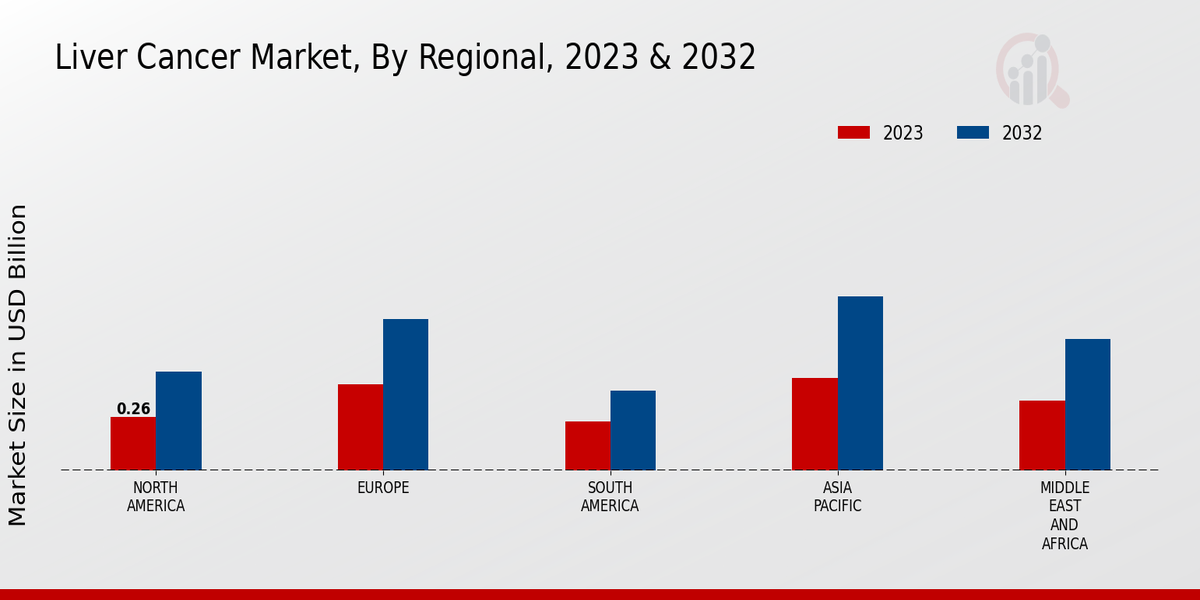Market Growth Projections
Growing Geriatric Population
The aging global population is a significant factor influencing the Global Liver Cancer Market Industry. As individuals age, the risk of developing liver cancer increases, primarily due to the accumulation of risk factors over time. With the geriatric population projected to grow substantially in the coming years, the demand for liver cancer treatments is likely to rise correspondingly. This demographic shift is expected to contribute to the market's expansion, with an estimated market value of 1.94 USD Billion in 2024. The Global Liver Cancer Market Industry must adapt to meet the needs of this vulnerable population, ensuring access to effective therapies and support.
Rising Incidence of Liver Cancer
The increasing prevalence of liver cancer globally is a primary driver for the Global Liver Cancer Market Industry. According to health statistics, liver cancer cases are projected to rise significantly, with an estimated 1.94 USD Billion market value in 2024. This surge is attributed to various factors, including the rise in hepatitis infections and alcohol-related liver diseases. As awareness of liver cancer grows, more individuals seek early diagnosis and treatment options, further propelling market growth. The Global Liver Cancer Market Industry is thus positioned to expand as healthcare systems adapt to manage this escalating health crisis.
Advancements in Treatment Modalities
Innovations in treatment options for liver cancer are transforming the landscape of the Global Liver Cancer Market Industry. Emerging therapies, such as targeted therapies and immunotherapies, are gaining traction, offering new hope to patients. For instance, the introduction of novel drugs has shown promising results in clinical trials, leading to improved survival rates. As these advancements continue, the market is expected to grow, with projections indicating a market value of 4.05 USD Billion by 2035. This evolution in treatment modalities not only enhances patient outcomes but also stimulates investment in research and development within the Global Liver Cancer Market Industry.
Increased Awareness and Screening Programs
Heightened awareness regarding liver cancer and the importance of early detection is driving growth in the Global Liver Cancer Market Industry. Public health campaigns and screening programs are being implemented worldwide, encouraging individuals to undergo regular check-ups. This proactive approach is likely to lead to earlier diagnoses, which can significantly improve treatment outcomes. As a result, the market is expected to witness a compound annual growth rate of 6.92% from 2025 to 2035. The emphasis on education and screening is crucial for reducing mortality rates associated with liver cancer, thereby fostering a more robust Global Liver Cancer Market Industry.
Regulatory Support and Funding Initiatives
Government initiatives and regulatory support play a crucial role in shaping the Global Liver Cancer Market Industry. Increased funding for liver cancer research and the development of new therapies are being prioritized by various health authorities. This support not only accelerates the pace of innovation but also enhances collaboration between public and private sectors. As a result, the market is likely to benefit from improved access to cutting-edge treatments and technologies. With projections indicating a market value of 4.05 USD Billion by 2035, the Global Liver Cancer Market Industry stands to gain significantly from these supportive measures.




